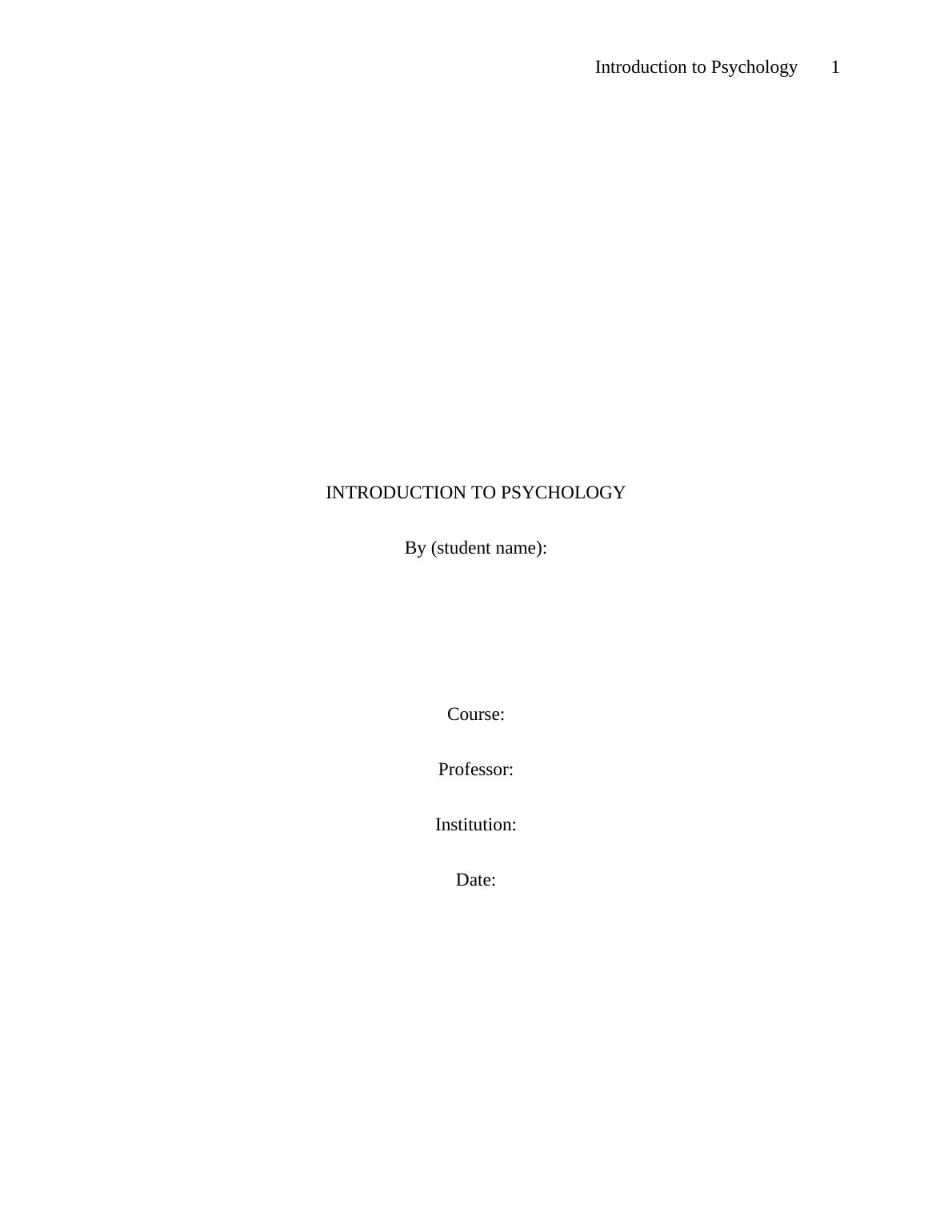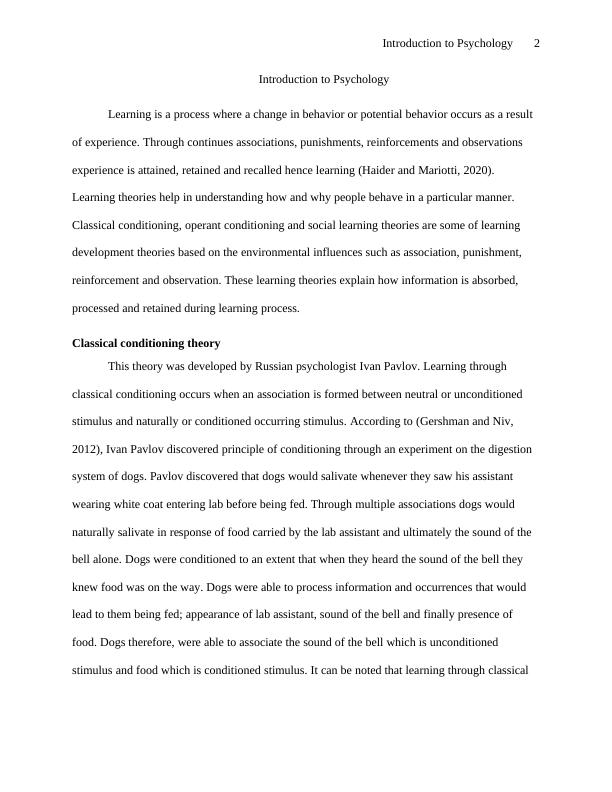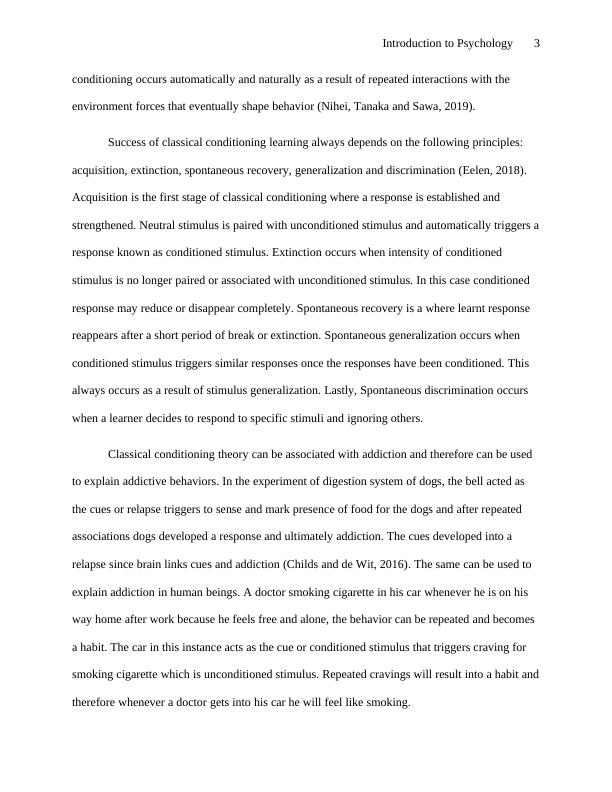Introduction to Psychology Theory 2022
Discuss how the three basic learning theories (Classical Conditioning, Operant Conditioning, and Social Learning) have contributed to the understanding of addiction.
10 Pages2712 Words26 Views
Added on 2022-09-26
Introduction to Psychology Theory 2022
Discuss how the three basic learning theories (Classical Conditioning, Operant Conditioning, and Social Learning) have contributed to the understanding of addiction.
Added on 2022-09-26
ShareRelated Documents
End of preview
Want to access all the pages? Upload your documents or become a member.
(PDF) Animal Experimental Studies
|7
|2680
|84
Behavioral Perspective Assignment
|5
|657
|139
Investigating Psychology Assignment
|7
|1211
|22
Learning Concepts Classical Molding
|3
|1171
|32
Classical Conditioning Explanation of Drug Tolerance and Overdose
|6
|1349
|87
Psychology of Addiction: Classical Conditioning and Substance Addiction
|8
|2136
|185



